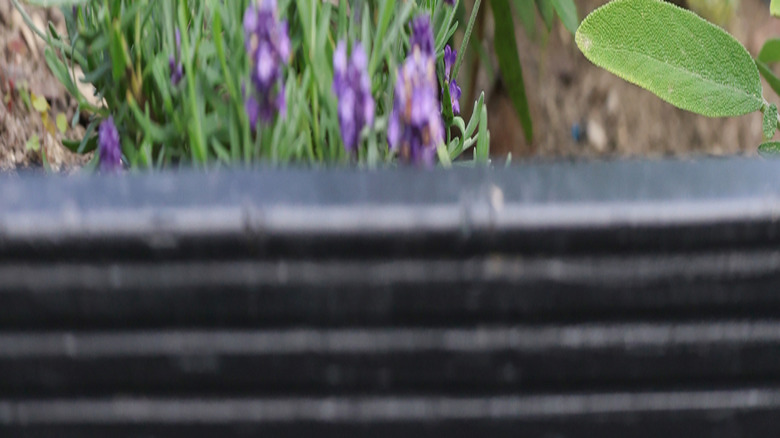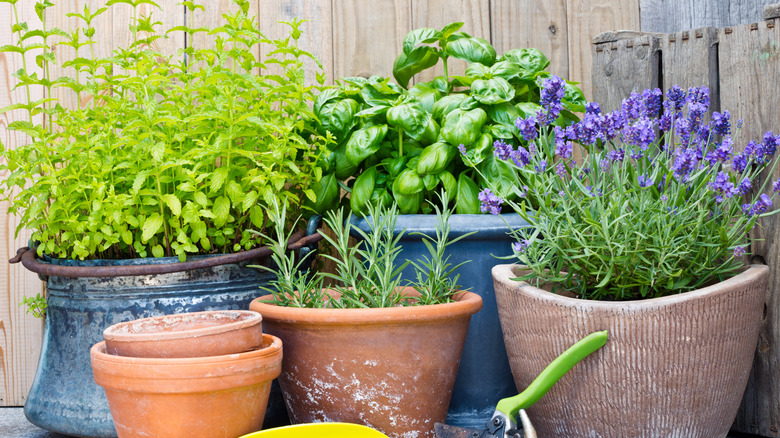Why Lavender And Basil Make A Bad Gardening Pair
When creating an herbal garden, it's common for new gardeners to choose herbs they recognize and fill their garden with them. Soon, some of the herbs begin to die, while others thrive. It may be something as simple as their growing companions. Not all herbs require the same growing conditions, and combining them in the same space means some of the herbs suffer.
A good example of this is growing lavender and basil side by side in the same garden bed. Lavender (Lavandula spp.), a perennial from the Mediterranean, prefers plenty of sun and well-drained soil. It also dislikes being over-fertilized and struggles when overwatered. Lavender also requires slightly alkaline soil (pH 6.5 to 7.5), prefers dry air, needs enough space around plants to avoid fungal issues, and can do well in USDA Hardiness Zones 5 through 10.
Basil (Ocimum basilicum L.), an annual plant originating from more tropical regions, on the other hand, grows better in full sun and well-drained, slightly acidic soil (pH 6.0 to 7.5). It requires frequent watering to keep the soil moist, creating a warm, humid microclimate in Zones 9 to 11. Growing better, more flavorful basil also requires a light fertilization schedule. If planted together in the same soil, you can't use the same technique to care for both plants.
Another difference to consider is pruning or cutting back. Basil does best if pinched back often to create a bushier plant with more harvestable leaves. Lavender requires specific pruning, and cutting it too frequently can damage the plant and reduce flowering. Since lavender is a perennial, caring for it properly ensures it comes back again the following year.
How to plant lavender and basil together so they can coexist
Although you can't plant both lavender and basil into the same garden bed the traditional way, you can still plant them in proximity to one another if you're willing to get creative. One effective solution is to grow each of these herbs in its own container. This allows you to adjust water, fertilizer, and soil acidity to match what the herb needs. Lavender can be planted with a gravelly mix that drains well, and basil can be planted with a richer potting soil mix.
For gardeners who like the in-ground garden design, another trick is to plant what is referred to as pot in pot. This is when an empty pot is planted or sunk into the ground, and a second pot is slid into the first pot to contain both the roots and soil composition that the specific herb requires. At the end of the growing season, the inner pot is easily removable for overwintering or replacement. The outer pot remains in place, ready for the following growing season. This is a great way to transition your garden from heat-loving herbs that will thrive all summer to more cold-hardy plants as fall approaches. This method also helps manage root spread and is ideal for gardeners who enjoy experimenting or changing their layout throughout the season. With a bit of planning, you can enjoy both lavender and basil in your garden space with these few simple rules.

